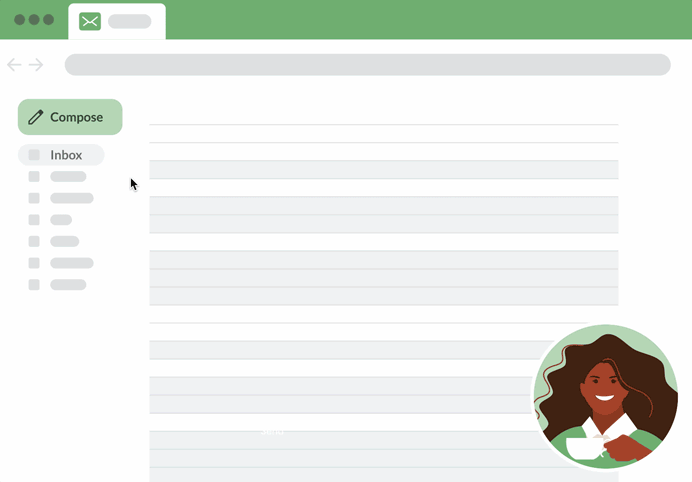Meetings. No one really wants to have them – we know, we’re saying the quiet part out loud. Arguably, many of them could be and should be emails. But for those that need to happen, people have been struggling for years with attendance, willingness to meet, and, not to mention, the very annoying back and forth that comes with finding a consensus on timing. Generally it takes 15 minutes to schedule a single meeting – five minutes per email, three emails per meeting. If you’re scheduling 10 meetings a week, that’s 2.5 hours on just getting those meetings scheduled! Woof.
Boomerang has supercharged over five million users’ email productivity since 2010. Most recently, we launched Boomerang’s meeting scheduler, which allow suggested time slots to be embedded in an email when trying to schedule a meeting. We wondered if we could finally determine the most efficient times for meeting scheduling – when workers would be most available, willing, and able to meet – and eliminate the email ping pong once and for all.
So we dug into the data.
The Data
We crunched some aggregated, anonymized data from Suggest Times, Boomerang’s feature for ad-hoc meetings where the host selects the times they want to offer to their guest. We looked at a data set of over 3.5 million proposed meeting times around the globe, with most Boomerang users meeting at times that coalesce around the typical 40 hour, Monday to Friday 9am–5pm work week in their local time.
Myth #1: People hate Monday mornings for meetings
No, Monday mornings are actually NOT bad to get a meeting scheduled. It turns out the best time to schedule a meeting is Monday at 11am. We’ll dive into why that is in a bit.
In fact, the five time slots with the highest booking rate are all on Monday or Tuesday in the first half of the day, with 11am on Monday twice as likely to be booked as the worst slot (Friday at 4:30pm) and 30% more likely to be booked than the average time slot.


Myth #2: Offering the most popular times is the best strategy
Monday morning meeting times were surprising to us, too, so we looked into why the likelihood of booking a meeting in that time frame was so high as opposed to, say, a Wednesday or Thursday.

The answer is two-fold – popularity and the way individuals construct their week.
We were surprised to find that the most popular slots – as in, the slots most often offered – were not the most booked slots, but it actually makes a ton of sense.
2pm on Wednesday and Thursday were the most frequently offered time slots, but their popularity means there will be conflicts with other meetings. While you can be offered a litany of meetings at those times, you can only book that time once. Regardless of how many people are vying for the same meeting slot, once it’s booked, it’s booked.
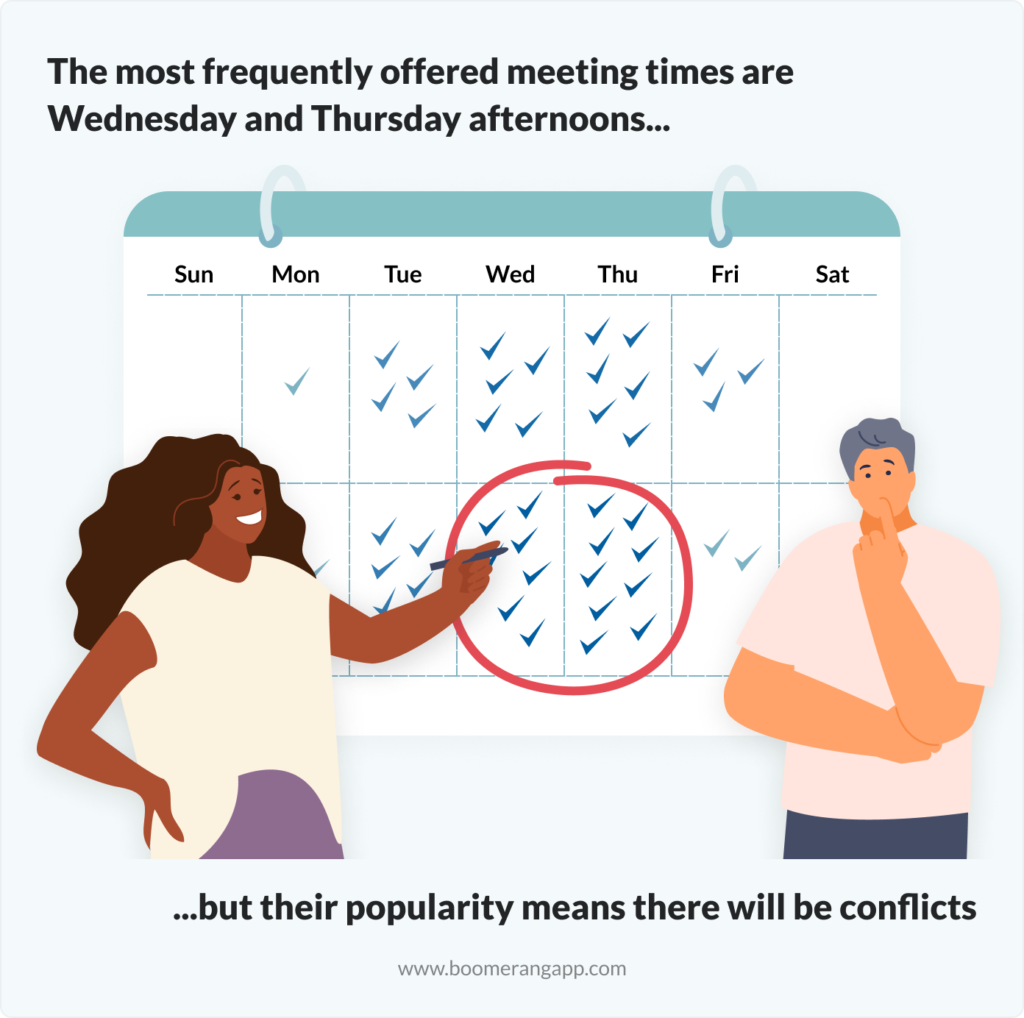
As far as weekly structure, Monday morning might not seem like a pleasant time for a meeting, but it seems most folks want to get their meetings out of the way early in the week. Our data shows the later in the week, the lower the booking rate. So if you want your meeting to actually happen, Monday morning is likely your best bet.
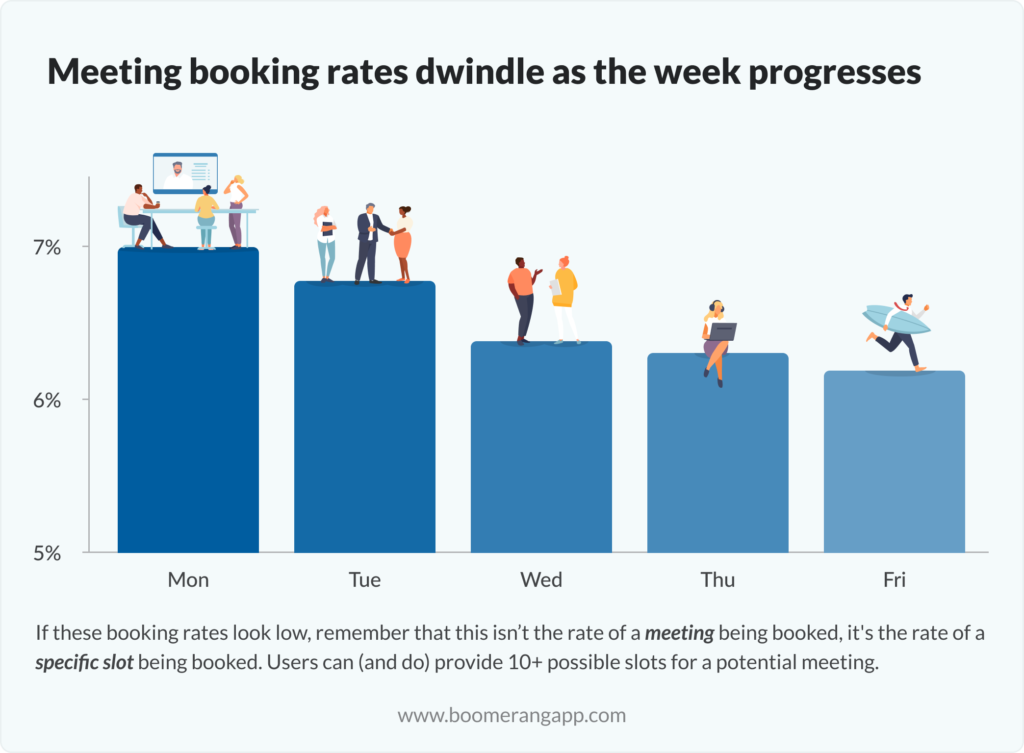

We calculated the booking rate of each time slot – the number of times a time slot was proposed divided by the number of times it was accepted – and found out which time slots were booked at the highest rate.
The data revealed a secret: the most proposed time slots were not the most bookable!

Myth #3: Offering too many options leads to decision fatigue
Offering one late morning weekday time slot over another is not going to make or break your meeting attendance. But the data shows that offering only one or two proposed times, even if they’re “good” ones, isn’t the best way to get a meeting scheduled.
We investigated the relationship between the number of slots a user proposes (our tools offer up to 20 slots at a time) and the likelihood of a meeting being booked. Do more available slots lead to more booked meetings? And if so, is there such a thing as too many meeting slots?

The above graph shows that when Suggest Times users provided only one proposed meeting time, their odds of confirming a meeting was 21.6%. This doubled to 43.4% when two slots were provided, and three slots saw another significant bump up to 51.0%. There were average booking rates higher still, peaking between 7-14 slots offered, and (mostly) staying above 50% until a noticeable drop when 15+ slots were offered.

The best way to book your meeting is to offer seven or more time slots, but hitting that sweet spot can be time consuming if you’re having to consult your calendar repeatedly.
Of course, it’s much easier to offer seven slots for a meeting using a productivity tool (shameless plug for Boomerang’s Suggest Times feature) but if that’s not an option for you, just stick to the rule of threes: always offer at least three potential times. That way, you’re squarely within the 51% likelihood someone will book a meeting with you – any additional offered slots are just icing on the cake.

Myth #4: People want long lead times before meetings
Lastly, we wanted to see if there was any correlation between whether a time slot was chosen and when the slot was offered.
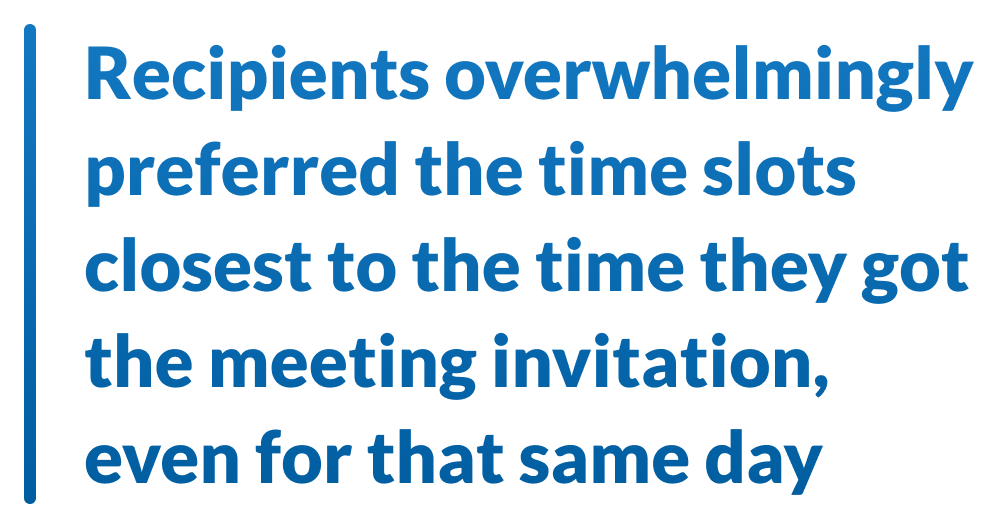
We expected to find that invites for time slots in the immediate future (for example, an invite sent in the morning with a time slot that same afternoon) might not be seen in time. We were also sure that meetings requested weeks or months in advance would suffer due to uncertainty and flakiness. Surely invites for the near future – two to five days in advance – would have the highest booking rates instead of being missed or forgotten.
But no! The data showed perhaps the clearest correlation yet: recipients overwhelmingly preferred the time slots closest to the time they got the meeting invitation, even if the time slot was for that same day unless it’s on Friday.
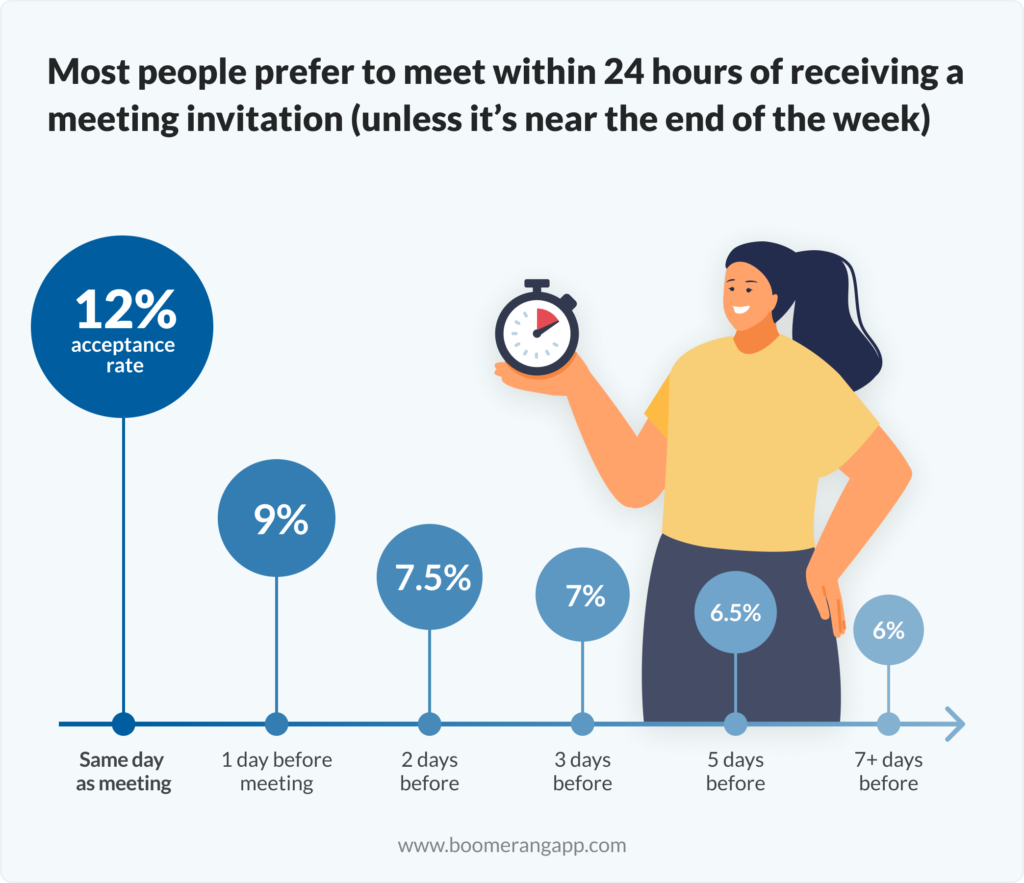

Given that most folks want to get their meetings over with early in the week, it makes sense that attitude would translate to meeting immediacy. Most people prefer to meet within a 24 hour window of the meeting offer, usually resulting in the majority of meeting slots being booked within 24 hours of the invitation.
However, this did not hold up if meetings were offered later in the week. The most bookable time slots change quite a bit, depending on what day and time they are sent. If an invite is sent on, say, a Thursday or Friday, recipients are far less likely to adhere to the 24 hour rule. Instead they’ll push to the earlier parts of the next week.

Conclusion
So, what have we learned?
- The best time to schedule a meeting is at 11am Monday morning. People want to get meetings done and off the calendar, and this time period has the least potential for conflicting with other meeting invites.
- Avoid Wednesday and Thursday afternoons. These are the most popular times to offer, meaning the potential for conflicts is high.
- Providing seven or more time slots is the best way to book a meeting, using a meeting scheduling tool like Boomerang to do this for you in a clean and efficient way. If you’re not a Boomerang user, three meeting slots will suffice.
- Time of invite matters. Adding a last-minute event to someone’s calendar probably won’t be well-received, but giving someone a quick turnaround time, usually within 24 hours, as an option is quite effective.
So whether you’re looking to meet less frequently, reduce the back and forth that comes with email scheduling, or optimize your calendar more broadly, these insights should help you book meetings faster, easier and (hopefully) make the process a bit less stressful.
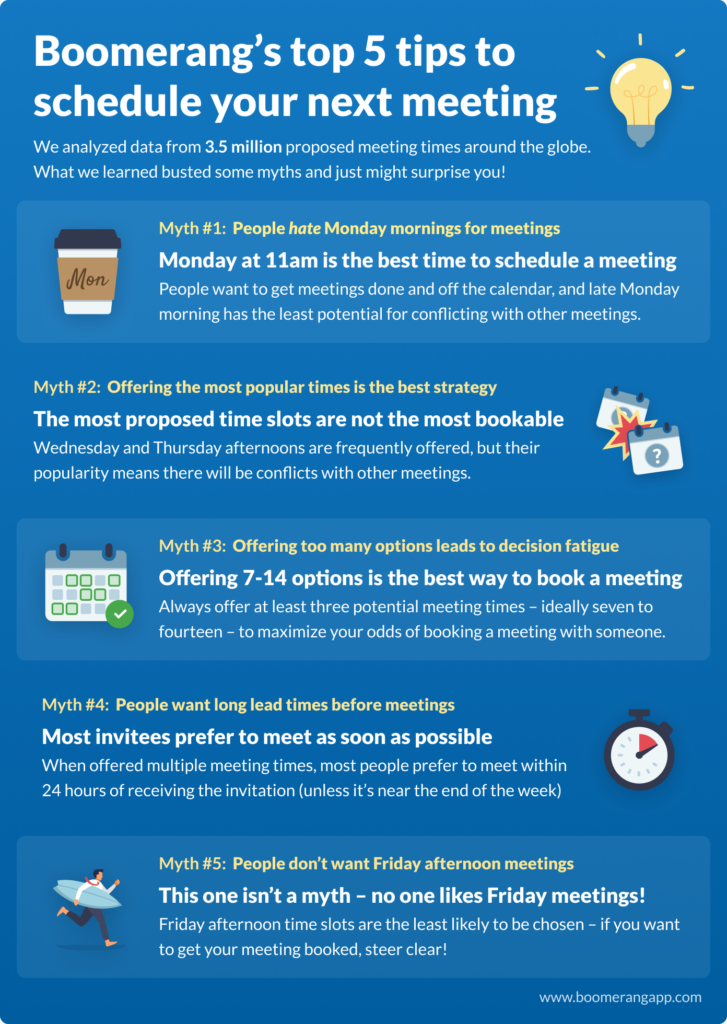
This article wasn’t supposed to be a pitch for Boomerang meeting scheduling, but the findings helped us appreciate how the features really help get meetings booked sooner.


